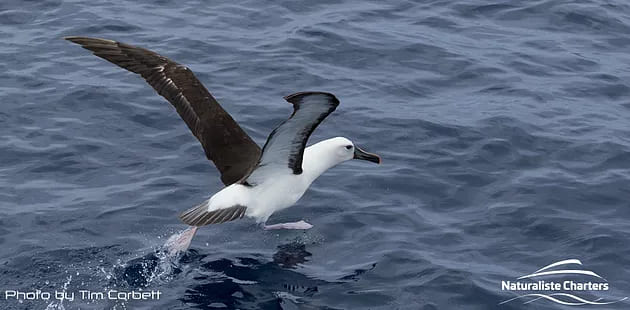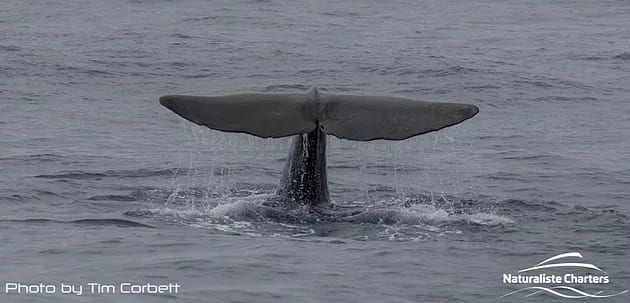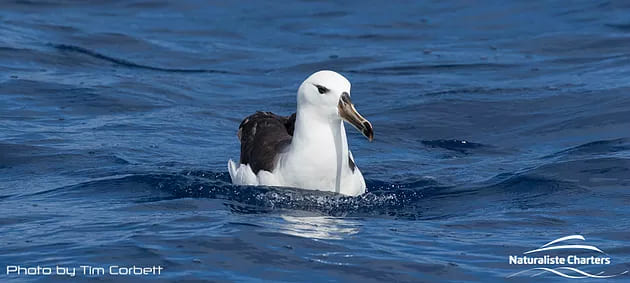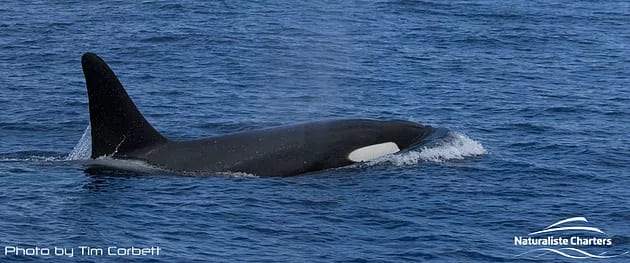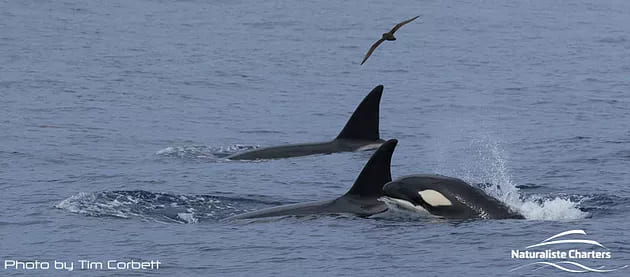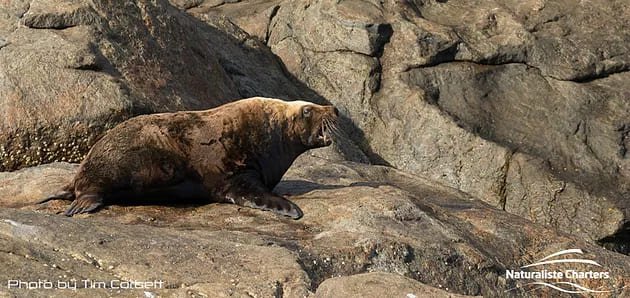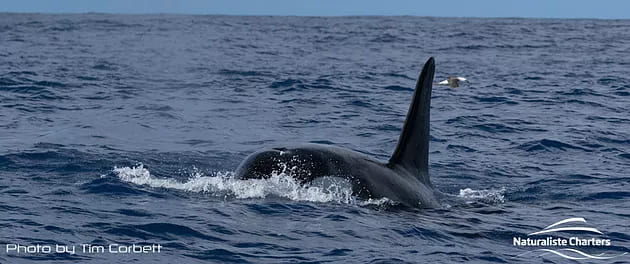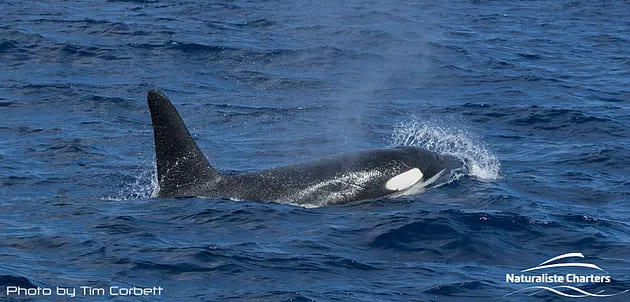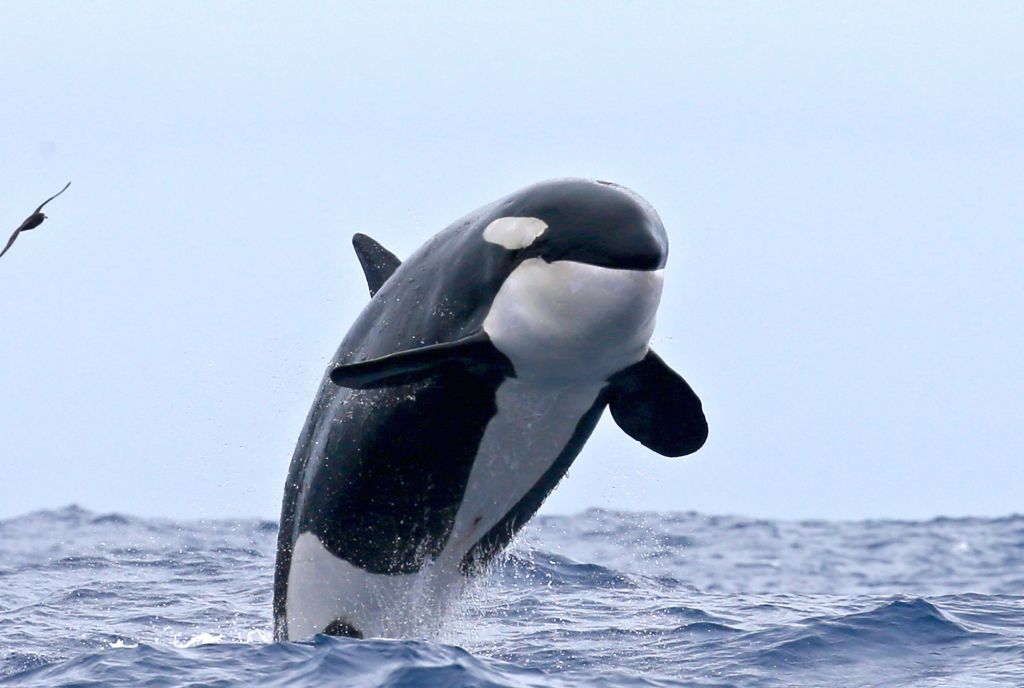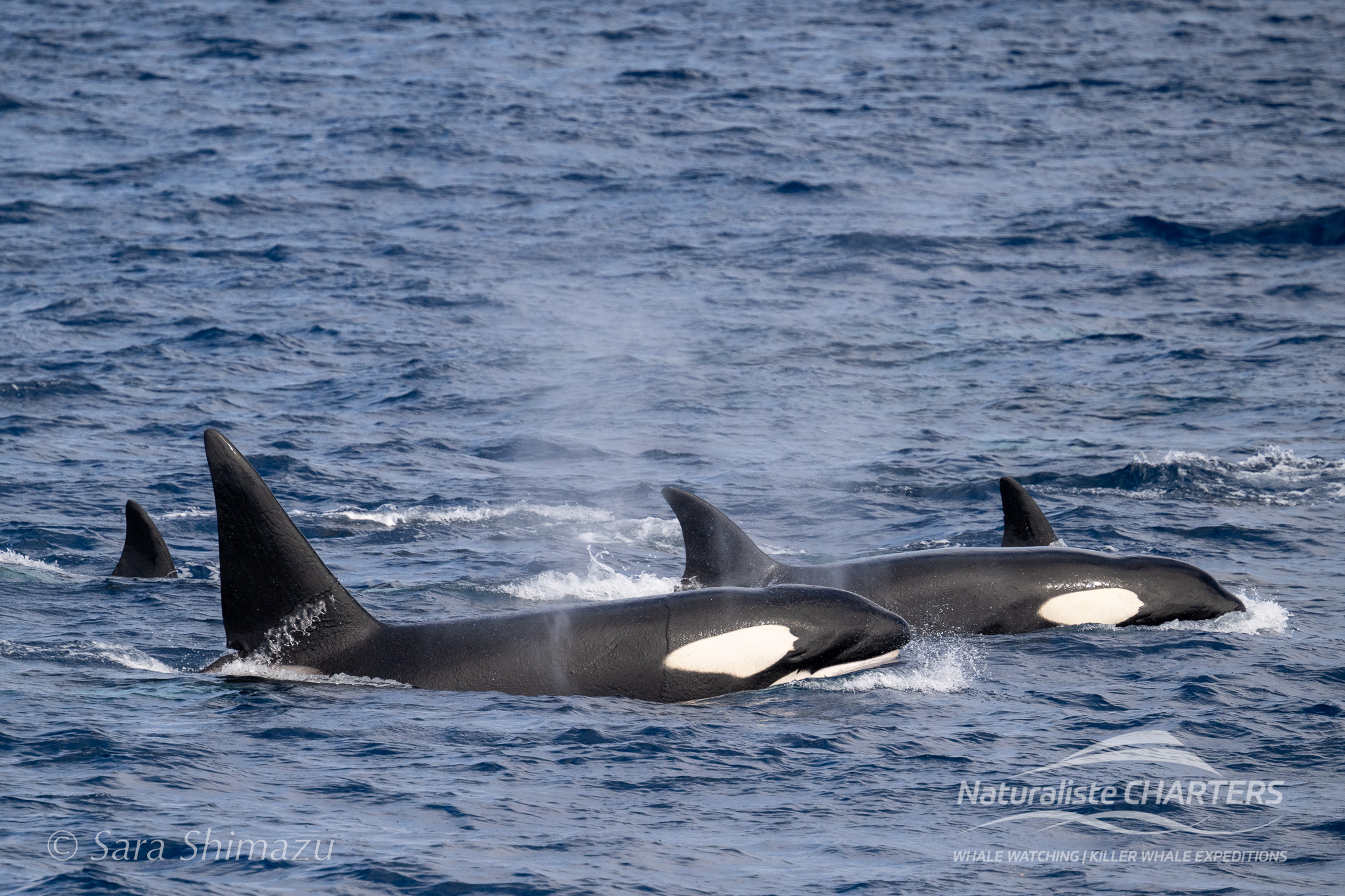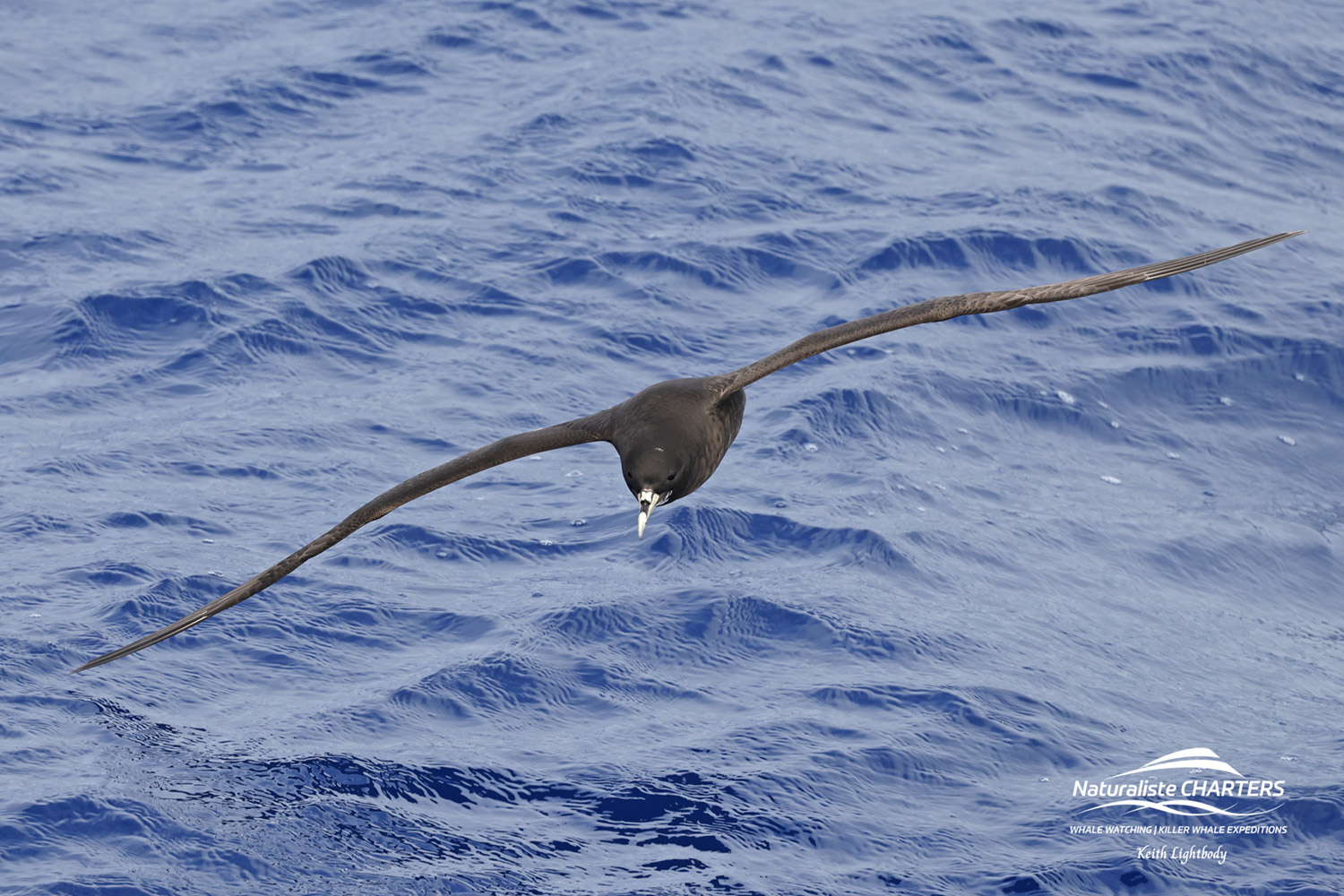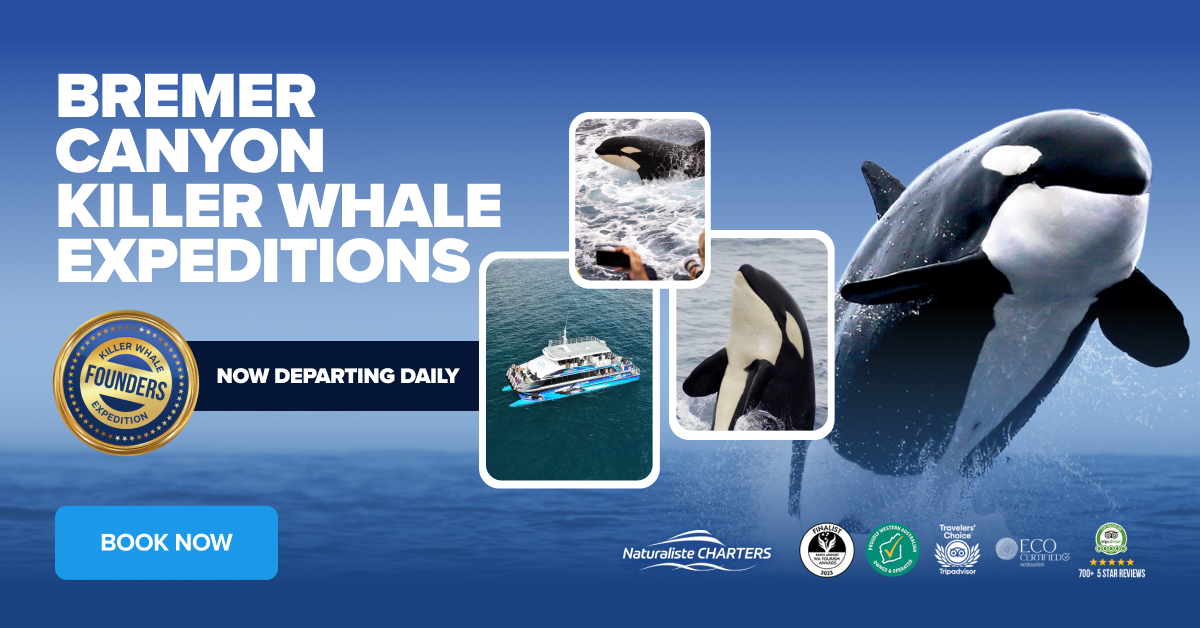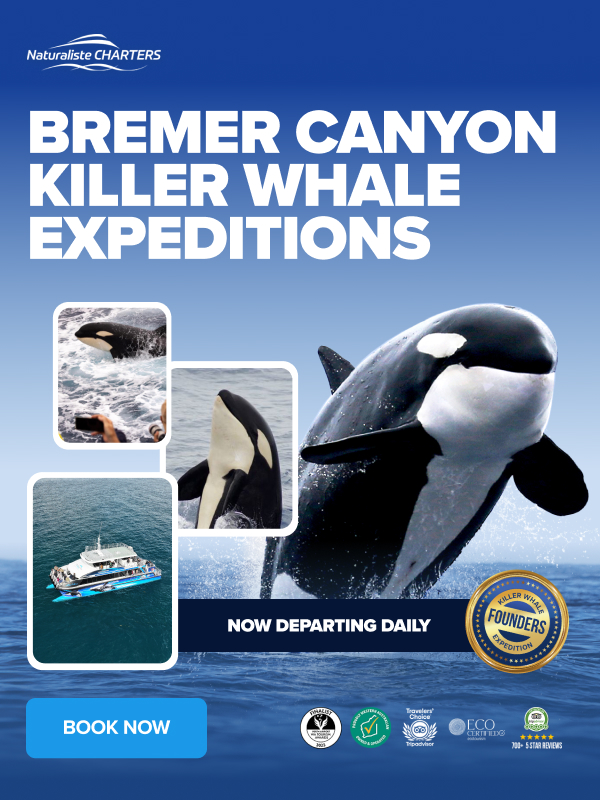We had a beautiful trip to the blue office again today. The sun shone and the sea was as calm as it gets on the southern ocean. In a textbook start, we sighted a pod as soon as we arrived. We recognised the small family as one that we spent our day with yesterday. The pod were intent on business of their own today, and largely ignored our careful approaches. We kept them in sight and watched their behaviour. Their activity was consistent with feeding, and several small, fresh oil slicks added weight to our supposition. We enjoyed the magnificent sight of a pod of wild killer whales as they traversed the blue expanse of the southern ocean.
We left the pod to continue their activities, and resumed our search. Before long, a single powerful blow shot skyward off our starboard side. The blows contiuned to rise in regular rythm as we approached. And there on the surface was a single sperm whale. We enjoyed the sight of the giant that had likely been a kilometre down beneath our keels just minutes before, where the watery world is one of darkness and crushing pressure, the most extreme environment imagineable fro an air breathing mammal.
The diet of a sperm whale is perhaps more tame than might be expected given their status as the largest toothed predator to ever have lived. While sperm whales feed primarily medium sized squid, the list of documented food items is fairly long and diverse. Prey items include octopuses, as well as medium and large-sized fish and shark and ray species that live on or close to the bottom.
Sperm whales are deep and prolonged divers and can therefore feed throughout the entire water column, even in very deep areas. However, they seem to forage mainly on or near the bottom, often ingesting stones, sand, sponges, and other non-food items. It is estimated that they consume about 3.0–3.5% of their body weight per day. We’ll let you do the maths on how much squid this 50 ton sperm whale would have needed to consume just on the day we saw it.
We enjoyed watching the whale breathe deeply, oxygenating depleted blood and tissues before it’s next foray to the deep. Eventually, the giant sounded, tail flukes skyward in a classic sperm whale salute. Knowing that it’s dive would likely last 45 minutes or more, we resumed our search.It didn’t take long to sight the killer whales again. The pod were quite dispersed, and while surfacing in a leaisurely fashion from the glassy ocean, they were not interested in interacting with our vessel. We again enjoyed keeping them in sight, admiring the magnificent form of the oceans apex predator, pointing out impresstive male dorsal fins and those belonging to small calves. We were joined by another pod, while a third were sighted 500m behind us. Who to approach? We rolled the dice and approached our choice carefully. We were immediately rewarded. The pod moved slowly across our bow, surfacing in unison, the features of each clearly visible thanks to the calm conditions. The pod included Lucky, distinctive for her missing dorsal fin. We have seen Lucky several times this season, but no matter how many times we see her, it is a good feeling to know that despite injury, she remains in good health and again has her healthy older calf in tow.A decision must have been communicated within the pod, as to our delight they changed course and approached our vessel, Lucky included, something we have never known this individual to do. After several close passes, swimming under the bow a few times, the pod slowly swam alongside, appearing completely relaxed as they closed the gap witih our vessel and then kept page of their own accord. The second new calf we have seen this season surged in unison with it’s extended family. Usually females place themselves between us and their offspring, however today mum was clearly comfortable with our presence as she allowed the calf to surge between her protective bulk and our vessel.As they surfaced, so close we could hear them breathing, they kept pace for 15 minutes at a time as we cruised at idling speed. Our amazing encounter then doubled, we had more company. A second pod that had been keeping pace further out on 3 o’clock surged to join us. They made a beeline for the boat, many surprising us with whooshing exhalations right alongside. It’s a feeling of incredible privilege to have a place in the lineup of a group of 22 killer whales as they traverse their sounthern ocean home.Until tomorrow,
The Bremer Canyon Crew

